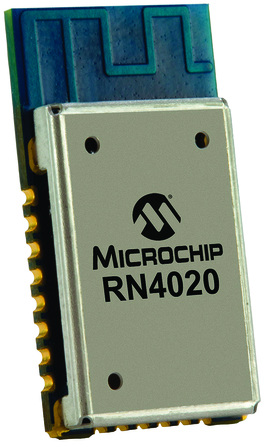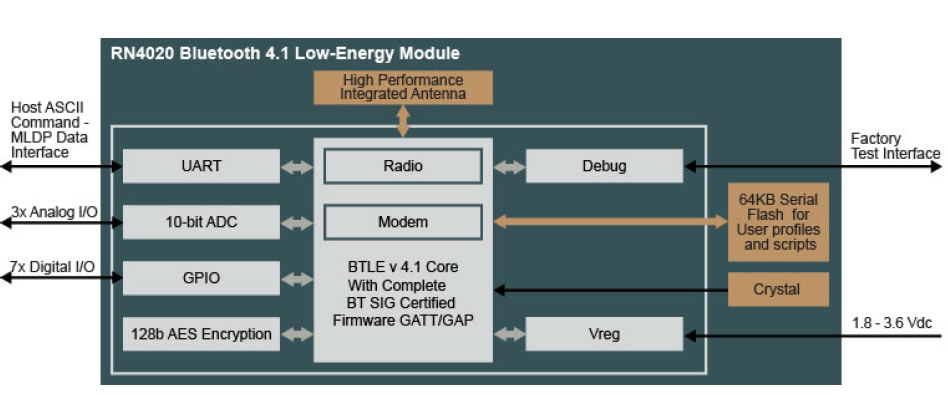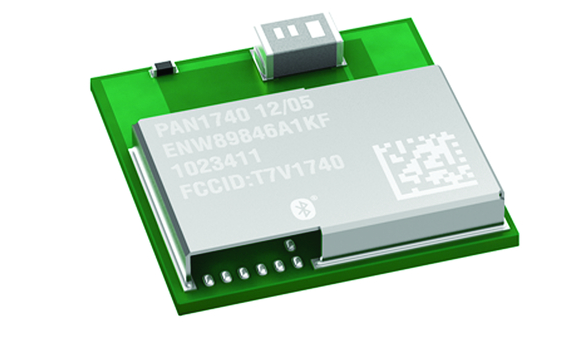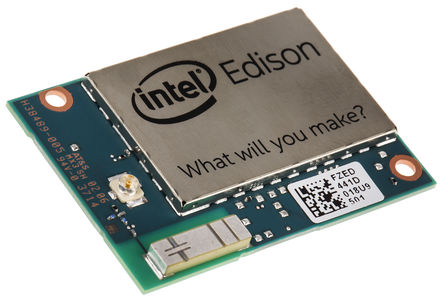Adding Bluetooth connectivity to your IoT design
We have the current trend of the IoT to thank for driving a surge of embedded system development. As more and more B2B and B2C organisations strive to cloud-enable their products and develop a new range of services offering connectivity either direct to the cloud or via a gateway is a vital element of any design.
By Simon Duggleby, Marketing Manager, Semiconductors, RS Components.
While wired connectivity is possible, and for some applications highly desirable, the majority of IoT-based developments will need to connect wirelessly to the internet. Some IoT architectures feature a gateway platform to provide a degree of local storage, intelligence within the local node network and longer-range communication to the cloud. Typically WiFi is used for the long-range communication while Bluetooth is emerging as the protocol of choice for the edge nodes such as sensors, switches and appliances. Typically designers have had to grapple with designing a wireless capability into their embedded design, something that is as complex as the embedded compute requirements themselves.
Bluetooth has been around for many years, the latest major revision of this 2.4GHz radio protocol being in 2010 when the core specification of Bluetooth 4.0 was introduced. This is also called Bluetooth Smart. It was in this release that the BLE protocol was made public. BLE uses a completely different protocol stack from the Classic Bluetooth specifications (v1.0 – v3.0) and is aimed at very low power applications that typically may operate off a single cell battery. The last couple of years have seen several sub version enhancements added to the core BLE specification, now 4.2, that incorporates more efficient bulk data transfers and more communications flexibility specifically for IoT designs, to name a few.
Optimised for low power consumption rather than higher data rates BLE is suited for use with battery powered sensors that need to transfer relatively small amounts of data. It achieves this low power profile by limiting the time that the radio transceiver is in use, scanning few advertising (the term used for part of the process to initiate a link) channels and only wakes to send or receive small packets of data. The BLE protocol also facilitates a very rapid approach to setting up link connections. The flip side to BLE’s low power consumption, typically a hundredth of that when using a Classic Bluetooth connection, is that the maximum short burst data rate of BLE is 100kb/s compared to Classic Bluetooth’s constant streaming capability with a maximum rate of up to 3Mb/s (Bluetooth v2.0 + Enhanced Data Rate).
Clearly, use of the Bluetooth v4.x BLE protocol is suited for IoT-based sensor and control applications. Should data volumes dictate the requirement for higher transfer rates then the use of a Classic Bluetooth protocol is recommended, although there is an impact on the required power budget.
Whichever Bluetooth profile suits your application it will be down to the embedded developer to integrate such connectivity together with the host processing. Designing your own discrete wireless transceiver might well be a tempting thought, but don’t forget the amount of time the design, prototyping and testing will take. And if that isn’t enough you have to have the design certified for use across the many regions and countries your product might end up in. The alternative is to select a pre-certified Bluetooth module that you can easily integrate into your design. Such modules, with a sub-£10 price point, typically have all the Bluetooth stacks embedded within a transceiver host MCU. Link set up and data transfer can easily be achieved with a set of straightforward APIs issued to the module interface bus.

Figure 1 – Microchip's RN4020 Bluetooth module
Figure 1 shows an example of a BLE module - the RN4020 from Microchip. Suiting use in industrial control systems, IoT sensor tags and medical devices the module is controlled via a simple UART interface.Configuration is achieved by using an ASCII command API that provides link set up, toggle sleep modes and all BLE protocol control. Packaged in a 11.5x19.5x2.5mm form factor that includes the antenna, the RN4020 consumes a maximum of 16mA when transmitting down to as low as 5μA in sleep mode and lower than 1.5mA when idle. Compliant to the BLE v 4.1 specification the module includes all the necessary embedded Bluetooth protocol stack profiles such that there is no requirement for the application MCU to host any stacks to operate.

Figure 2 - RN4020 block diagram
The module includes three 10-bit ADC channels together with up to seven GPI/O ports, some of which can be used for driving module status LEDs to show connection status, activity indication and whether Microchip’s Low-energy Data Profile (MLDP) is active.
Should your IoT design require more in the way of connectivity options and application UI support then the PAN1740 module from Panasonic would be an excellent choice. Compliant with the Bluetooth Smart v4.1 BLE specification this extremely small module measures just 9x9.5x1.8mm and consumes just 5mA during transmit. Optimised for embedded applications such as health monitors and sports performance sensors, this module comprises the wireless transceiver, a host Cortex-M0 MCU, an integrated antenna and an embedded BLE stack.

Figure 3 – Panasonic's PAN1740 BLE module
Supporting UART, SPI and I2C interfaces the PAN1740 uses Dialog’s Smart Snippets Bluetooth Software platform that provides support for not only the standard BLE specification but also for several application-specific profiles such as proximity, consumer wellness, sports and fitness.
While the above modules offer a high level of integration they still require a host application platform to run the IoT application. There are two possible alternatives to combine a host MCU and wireless connectivity. The first method is to base your design on an SoC device that incorporates both an MCU and a BLE transceiver within a single device. An example is the CYB10x6x family from Cypress. Based around an ARM Cortex-M0 ultra low power core running at 48MHz, a Bluetooth v4.1 transceiver with integrated balun and a Cypress CapSense capacitive touch sensing controller, the SoC provides a highly programmable and flexible solution for use in remote controls, toys and HIDs. The CYB10x6x also features four PWM channels, 36 GPI/O ports, serial interfaces and a 128-segment LCD driver. Bluetooth connectivity is made simple with the provision of a royalty-free BLE stack that supports the generic access profile in addition to central, peripheral, observer or broadcast roles. To aid the design process a complete BLE development kit (CY8CKIT-0420BLE) is available that incorporates a CY5670 CySmart USB dongle for debugging BLE connectivity, a development CY5671 PRoC BLE module and a pre-loaded baseboard.
The alternative approach that might appeal to developers wishing to further drive down cost and shrink form factors is to select an SBC board that has Bluetooth connectivity integrated. An example of this is Intel’s Edison module.

Figure 4 – Intel Edison
This sub-£40 Linux-based module offers a comprehensive set of features in a 35.5x25.0x3.9mm package. An Intel SoC device comprising both an Intel Atom dual-core, dual-threaded CPU running at 500MHz and a 32-bit Intel Quark MCU running at 100MHz is complemented with 1GB of RAM and 4GB of Flash. Powered at 1.8VDC and offering up to 40 configurable GPI/O pins, the module incorporates both 802.11 a/b/g/n WiFi and BLE connectivity. Pre-loaded with the open source BlueZ official Linux Bluetooth protocol stack, Intel provides a detailed guide to implementing all aspects of Bluetooth connectivity on its Intel Communities Site.
Whichever approach you use, pre-certified wireless modules provide a very quick and inexpensive way of incorporating Bluetooth connectivity to your design. In this way you can balance the commercial aspects of time-to-market with on-target BOM costs.
 |
Author Bio: Simon Duggleby holds a Master's Degree in electronics and computer systems engineering from Loughborough University. Since graduating, he has worked in the field of electronics distribution, first as an applications engineer with Abacus ECD (now part of the Avnet Group), then joining RS Components in 2009 as a technical marketing engineer. For the past two years, Simon has been responsible for steering the marketing strategy of the semiconductor product category at RS. |


